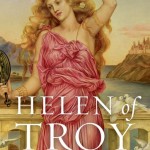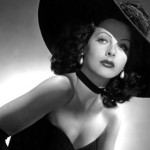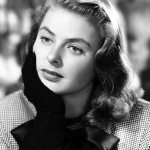 We began today with a discussion of Ruby Blondell’ book Helen of Troy: Beauty,Myth, Devastation. We spent the morning parsing the relationship between women’s beauty, danger, lack of control, erotic desire and power. Is the model of erotic power coming to an end with the pluralization of genders?- asked our leader, David Konstan.
We began today with a discussion of Ruby Blondell’ book Helen of Troy: Beauty,Myth, Devastation. We spent the morning parsing the relationship between women’s beauty, danger, lack of control, erotic desire and power. Is the model of erotic power coming to an end with the pluralization of genders?- asked our leader, David Konstan.
Topics, again, ranged far and wide, all circling around an amorphous organizing mirage of beauty:
jealousy and the Greeks (not really an emotion of interest for them)
Menander’s comedies and the recognition of children
Aristophanes’ play on women taking over the government
Interesting point in Greco-Roman drama/comedy: if I girl references only a mother, this flags that she is a prostitute since no father or brother is there to “protect” her!
seeing goddesses and women naked and what that means
Beauty and ugliness in dance: Martha Graham rebelling against hegemonic notions of dance beauty
heroines in 19th century opera: free women alswyas end badly
The Femme Fatale–this generated quite a lot of discussion in terms of which movies introduce and define what a femme fatale is. Apparently there is a site to instruct one on becoming a femme fatale. You judge its accuracy: http://www.wikihow.com/Be-a-Femme-Fatale
So who is the femme fatale?
- Hedy Lamarr
- Ingrid Bermann
- Marilyn Monroe
Everyone agreed that Lamarr counted. While a case was made for Bergman, I am less certain. And while Monroe is definitely the sex image of the 50s, she was not a femme fatale.
After a morning saturated with attention to women, the afternoon session took us in a slightly different direction. Themes included:
Veiling and control
nature: European vs. American ideals
Beauty and sublimity
Nature as conquest vs nature as aesthetic object
ruins and the curious reconstruction of older villages to be memories of a bygone era (nostalgia? Fake or real?)
A brief and regretfully lost thread on the Parthenon, Elgin Marbles, beauty, historicity.

One of our group shared a double-sided page of quotes that he uses in a seminar on taste. Disembodied quotes never quite work for me unless they are self-contained enough to situate their meaning. But several of the quotes worked quite well to prompt some reflections:
“If artworks are answers to their own questions, they themselves thereby truly become questions.”
“There is no art that does not contain in itself as an element, negated,of what it repulses.” Theodor Adorno, Aesthetic Theory (1970)
 So, I end today’s commentary snapshot with a reference from another participant who I believe put her finger on the quintessential example for the day, Alban Berg’s Lulu. Lulu represented the fatal attraction of women and the decadent response of unbridled power and violence in men. This review offers a fascinating analysis of the opera and its time.
So, I end today’s commentary snapshot with a reference from another participant who I believe put her finger on the quintessential example for the day, Alban Berg’s Lulu. Lulu represented the fatal attraction of women and the decadent response of unbridled power and violence in men. This review offers a fascinating analysis of the opera and its time. 



